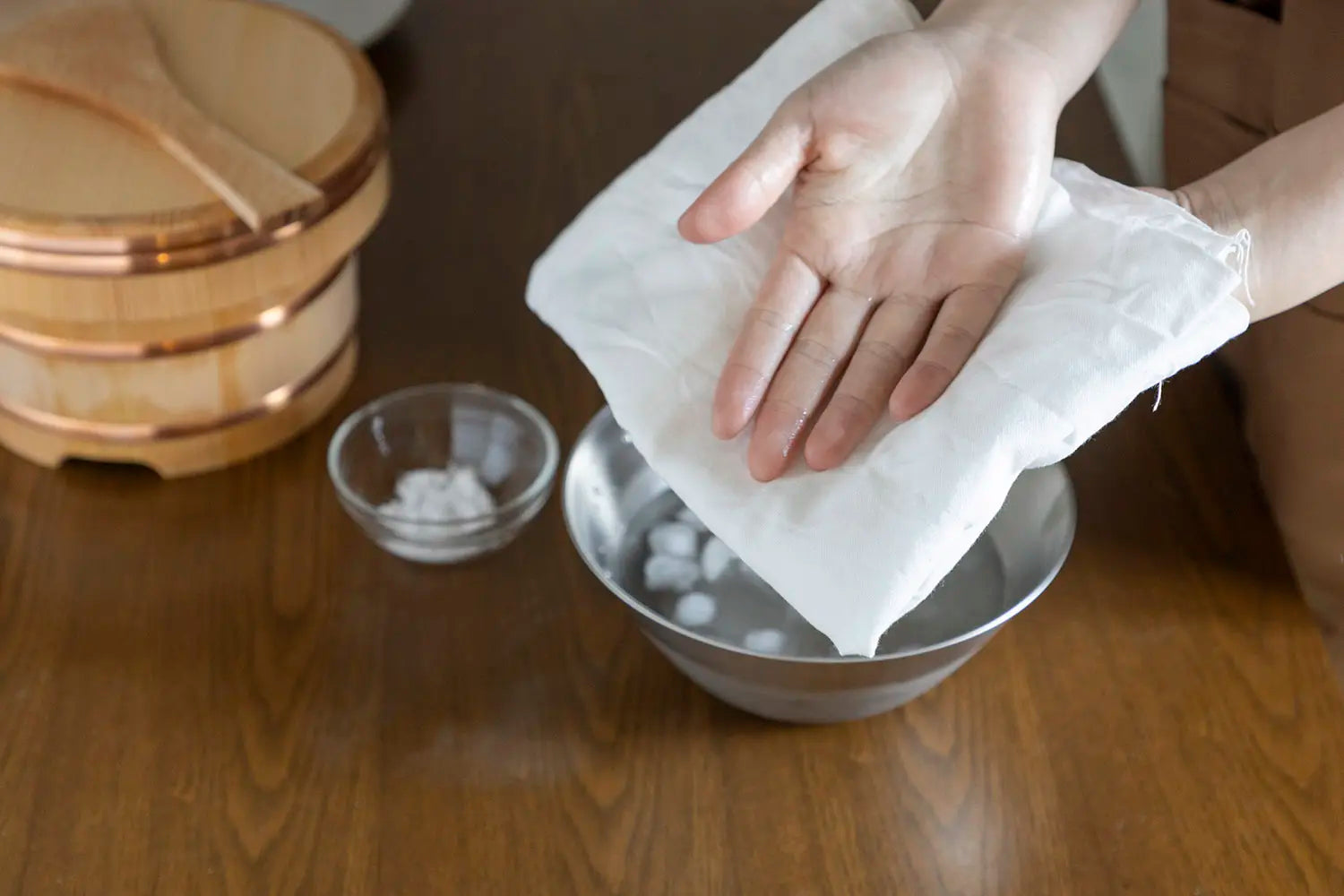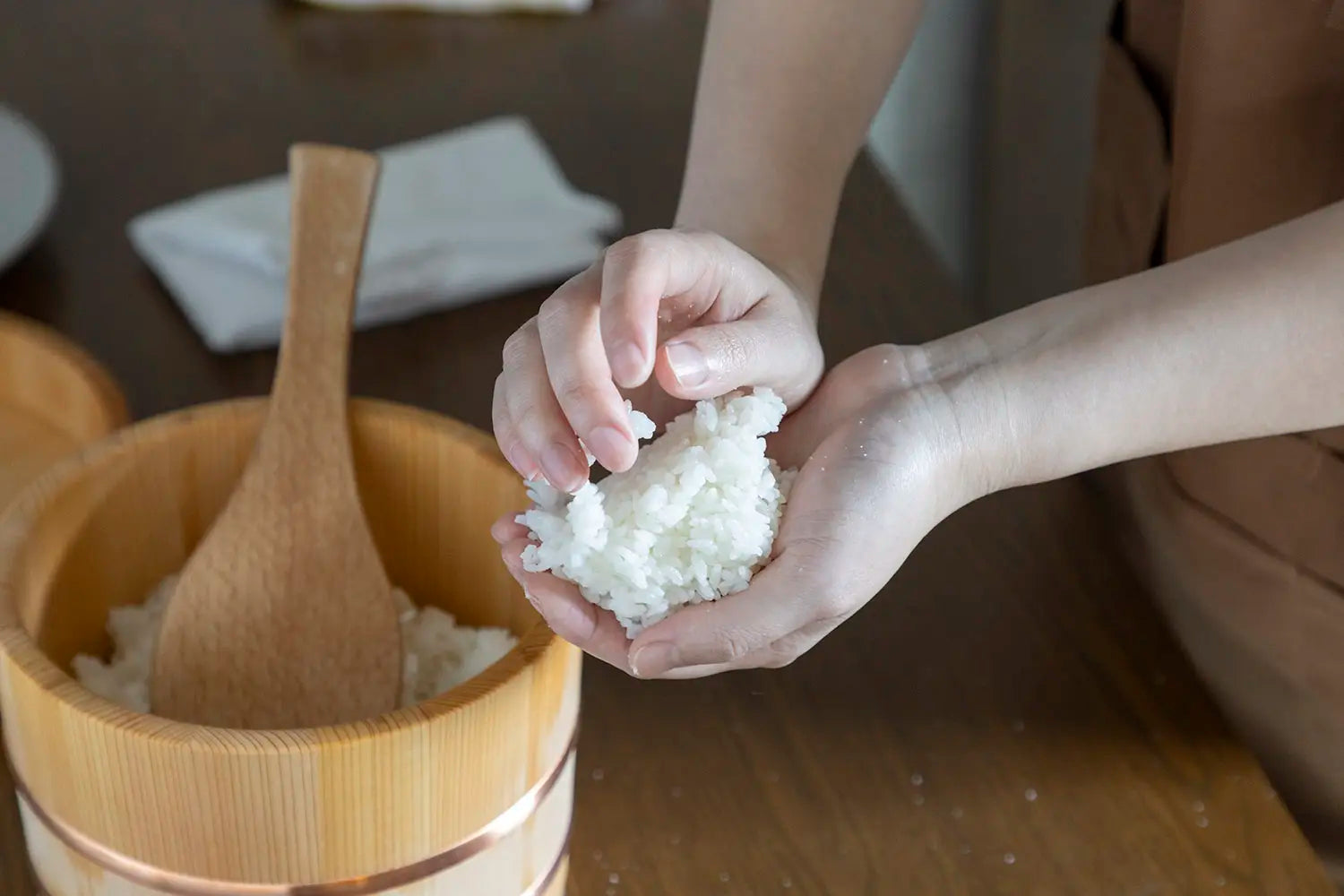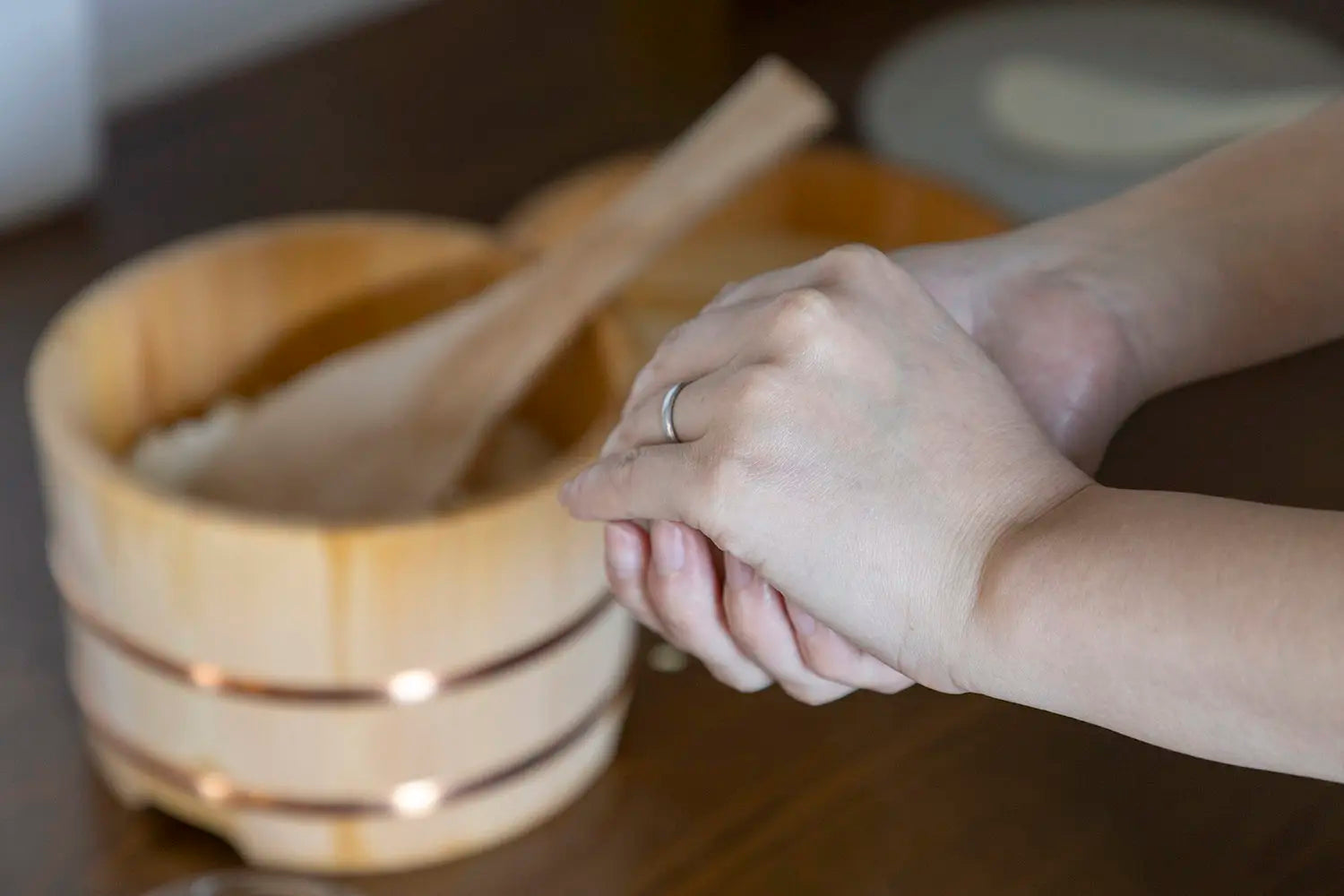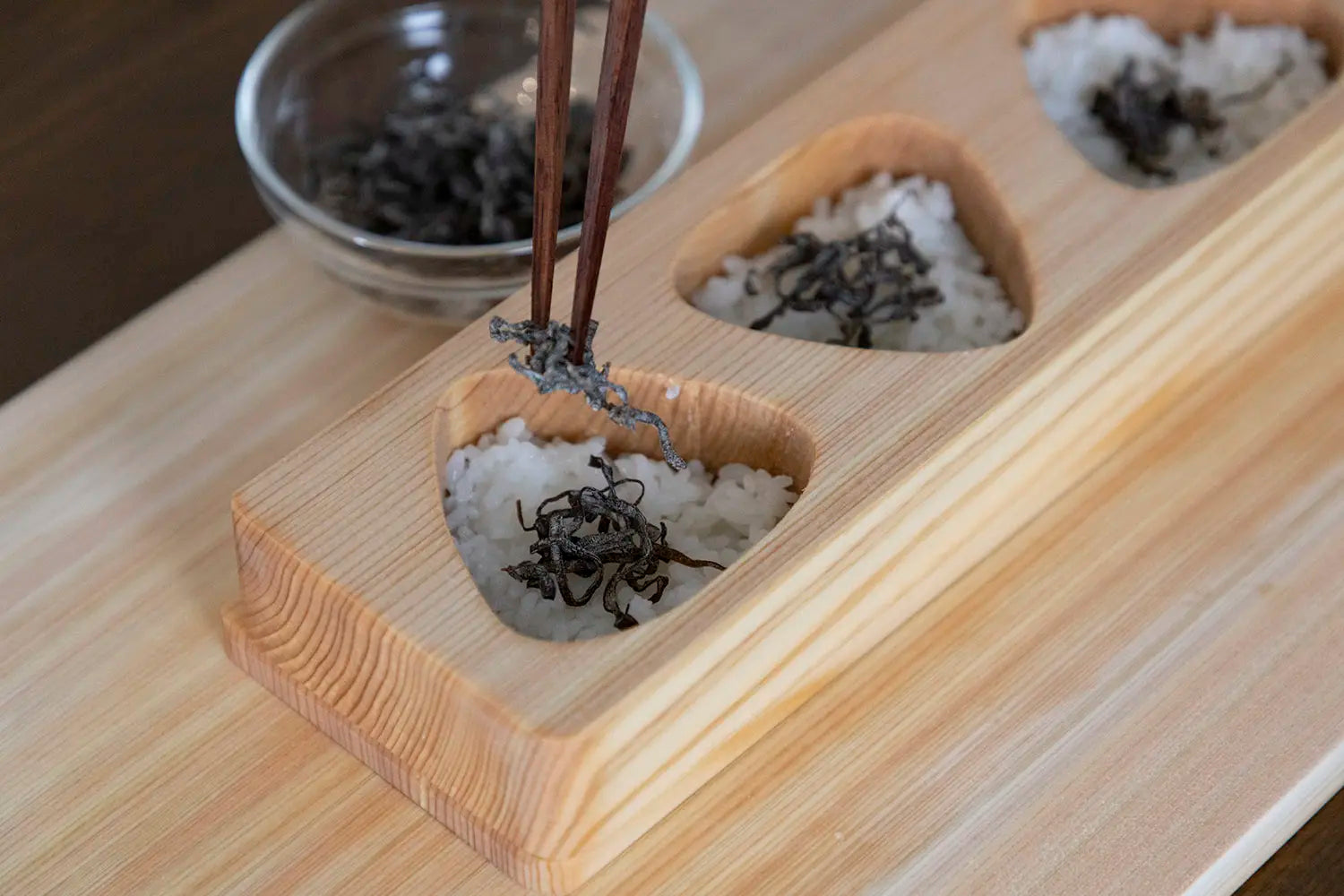The product we used:
What is Onigiri?

Onigiri--sometimes translated as "rice balls"--are what Japanese pack into their lunch boxes before heading off to work or the playground. On any occasion that you could think of packing a turkey sandwich, your Japanese clone would pack an onigiri.
And judging by how handsome you look through your webcam, we at Globalkitchen Japan can tell you just made rice in your Yamacoh Ohitsu--purchased after you read our blog post last week. You are obviously a man of good taste and judgment.
Now lets put that rice to good use by making some onigiri. We'll make some by hand, and then we'll make some using an onigiri mold from our friends at Yamacoh.
Making Onigiri by Hand


Cool Hands in Ice Water


Dip your hands off in ice water for about 10 seconds. Cooling your hands will help reduce the stickiness of the rice as you handle it.
After cooling, use the unsung hero of the kitchen dry your hands.
Apply Salt to Hands

Grab a pinch of salt and apply it to the palms of your hands. The salt will bring out the flavor of the rice and help prevent it from sticking to your hands.
Shape Rice





Take a rice spatula and put some rice on your hand. Use your other hand to gently squeeze the rice together. After the rice has been compacted, hold the rice flat on one hand and use the other hand to form a "mountain" shape. Rotate the ball and form the mountain shape a few times.
After forming the three sides of your triangle, gently squeeze the front and back of the onigiri to flatten it. Rotate and finish shaping the three other sides one last time.
(Optional) Add Filling
After shaping the onigiri, you can feel free to push a dimple in the middle of it and stick some kind of filling, such as tuna or a classic umeboshi (pickled Japanese plum).
(Optional) Use Sarashi


If you are making onigiri with freshly made rice, shaping it by hand will feel a little like shaping little balls of lava. Does that make you nervous? Then it's sarashi to the rescue!
Instead of cooling your hand with ice water, dampen a sarashi with that water and sprinkle some salt on it. Hold the sarashi in your hand as a protective cover when you shape the rice.
Making Onigiri with a Mold
Wet the Mold


If you prefer a cooler, less hands-on approach, you can use a mold. Take a clean mold and soak it in cold water. The cold water will help prevent the rice from sticking.
Pat dry the mold after soaking.
Stuff Mold with Rice


Sprinkle some salt on the bottom of the mold, then stuff it with rice. Use the rice spatula to compact the rice in the mold and make sure there aren't any open spaces.
(Optional) Add Filling

If you want to add a filling, fill the mold half-way with rice, add the filling, and then cover with the rest of the rice.
Remove Mold


After thoroughly compacting the rice, lift the mold. You now have some delicious-yet-portable lumps of starch and love ready to wrap and slap in your lunch box.
Finger-Food That Might Change Your Life

Once you get the hang of it, making onigiri is quick and easy. There are many different ways to spice up onigiri, such as sprinkling them with furikake or wrapping them in seaweed (then you've made omusubi).
One bonus benefit of making onigiri with a mold after preparing it in your ohitsu is that you and the rice look absolutely fantastic the whole time for relatively little effort. Run the whole process in front of that special seven eleven lady you invited over and you know she'll come back for seconds.
To be clear, we at Globalkitchen Japan have been advised by our lawyers that we can't guarantee that an ohitsu and onigiri mold will transform your future dating experiences; however, they told us that we can definitely guarantee that the Butterfly-Effect is real and that it's worth a shot.





